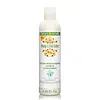What's inside
What's inside
 Key Ingredients
Key Ingredients

No key ingredients
 Benefits
Benefits

 Concerns
Concerns

 Ingredients Side-by-side
Ingredients Side-by-side

Zinc Pyrithione 1%
AntiseborrhoeicWater
Skin ConditioningSodium C14-16 Olefin Sulfonate
CleansingDisodium Laureth Sulfosuccinate
CleansingDisodium Cocoamphodiacetate
CleansingSodium Chloride
MaskingGlycol Distearate
EmollientAmodimethicone
Sodium Lauryl Sulfoacetate
CleansingPPG-5-Ceteth-20
EmulsifyingPotato Starch Modified
Cocamide Mipa
EmulsifyingCeramide NP
Skin ConditioningCeramide AP
Skin ConditioningCeramide EOP
Skin ConditioningCarbomer
Emulsion StabilisingNiacinamide
SmoothingTrideceth-6
EmulsifyingTriethyl Citrate
MaskingSodium Hydroxide
BufferingSodium Benzoate
MaskingSodium Lauroyl Lactylate
EmulsifyingSalicylic Acid
MaskingSodium Polynaphthalenesulfonate
Emulsion StabilisingSodium Hyaluronate
HumectantCholesterol
EmollientPhenoxyethanol
PreservativeCoco-Betaine
CleansingPropylene Glycol
HumectantCitric Acid
BufferingCetrimonium Chloride
AntimicrobialCaprylyl Glycol
EmollientXanthan Gum
EmulsifyingPhytosphingosine
Skin ConditioningPolyquaternium-10
Acrylates Copolymer
Benzoic Acid
MaskingZinc Pyrithione 1%, Water, Sodium C14-16 Olefin Sulfonate, Disodium Laureth Sulfosuccinate, Disodium Cocoamphodiacetate, Sodium Chloride, Glycol Distearate, Amodimethicone, Sodium Lauryl Sulfoacetate, PPG-5-Ceteth-20, Potato Starch Modified, Cocamide Mipa, Ceramide NP, Ceramide AP, Ceramide EOP, Carbomer, Niacinamide, Trideceth-6, Triethyl Citrate, Sodium Hydroxide, Sodium Benzoate, Sodium Lauroyl Lactylate, Salicylic Acid, Sodium Polynaphthalenesulfonate, Sodium Hyaluronate, Cholesterol, Phenoxyethanol, Coco-Betaine, Propylene Glycol, Citric Acid, Cetrimonium Chloride, Caprylyl Glycol, Xanthan Gum, Phytosphingosine, Polyquaternium-10, Acrylates Copolymer, Benzoic Acid
Water
Skin ConditioningPetrolatum
EmollientPEG-4
HumectantGlyceryl Stearate
EmollientSorbitol
HumectantCetearyl Alcohol
EmollientParfum
MaskingIsocetyl Stearate
EmollientEthylhexyl Palmitate
EmollientCeteareth-20
CleansingAcrylates/Stearyl Methacrylate Copolymer
Emulsion StabilisingAmodimethicone
Butyrospermum Parkii Butter
Skin ConditioningButyrospermum Parkii Oil
EmollientCaprylyl Glycol
EmollientDimethicone
EmollientDimethiconol
EmollientMangifera Indica Seed Butter
Skin ConditioningOlea Europaea Fruit Oil
MaskingPPG-1 Trideceth-6
Skin ConditioningPanthenol
Skin ConditioningPolybutene
Polyquaternium-10
Polyquaternium-37
Polysorbate 60
EmulsifyingPropylene Glycol Dicaprylate/Dicaprate
EmollientSodium Acetate
BufferingSodium Chloride
MaskingSorbitan Oleate
EmulsifyingCitric Acid
BufferingEthylhexyl Methoxycinnamate
UV AbsorberBenzyl Alcohol
PerfumingBenzyl Benzoate
AntimicrobialBenzyl Salicylate
PerfumingCitral
PerfumingHexyl Cinnamal
PerfumingLimonene
PerfumingLinalool
PerfumingPhenoxyethanol
PreservativeWater, Petrolatum, PEG-4, Glyceryl Stearate, Sorbitol, Cetearyl Alcohol, Parfum, Isocetyl Stearate, Ethylhexyl Palmitate, Ceteareth-20, Acrylates/Stearyl Methacrylate Copolymer, Amodimethicone, Butyrospermum Parkii Butter, Butyrospermum Parkii Oil, Caprylyl Glycol, Dimethicone, Dimethiconol, Mangifera Indica Seed Butter, Olea Europaea Fruit Oil, PPG-1 Trideceth-6, Panthenol, Polybutene, Polyquaternium-10, Polyquaternium-37, Polysorbate 60, Propylene Glycol Dicaprylate/Dicaprate, Sodium Acetate, Sodium Chloride, Sorbitan Oleate, Citric Acid, Ethylhexyl Methoxycinnamate, Benzyl Alcohol, Benzyl Benzoate, Benzyl Salicylate, Citral, Hexyl Cinnamal, Limonene, Linalool, Phenoxyethanol
Ingredients Explained
These ingredients are found in both products.
Ingredients higher up in an ingredient list are typically present in a larger amount.
This water-soluble silicone is used for its hydrating and softening properties. It is used to add a silky feel to skincare products and has great benefits for haircare.
In haircare, this ingredient:
- Adds shine
- Protects color
- Offers thermal protection
- Boosts hair strength
- Does not build up as easily
Caprylyl Glycol is a humectant and emollient, meaning it attracts and preserves moisture.
It is a common ingredient in many products, especially those designed to hydrate skin. The primary benefits are retaining moisture, skin softening, and promoting a healthy skin barrier.
Though Caprylyl Glycol is an alcohol derived from fatty acids, it is not the kind that can dry out skin.
This ingredient is also used as a preservative to extend the life of products. It has slight antimicrobial properties.
Learn more about Caprylyl GlycolCitric Acid is an alpha hydroxy acid (AHA) naturally found in citrus fruits like oranges, lemons, and limes.
Like other AHAs, citric acid can exfoliate skin by breaking down the bonds that hold dead skin cells together. This helps reveal smoother and brighter skin underneath.
However, this exfoliating effect only happens at high concentrations (20%) which can be hard to find in cosmetic products.
Due to this, citric acid is usually included in small amounts as a pH adjuster. This helps keep products slightly more acidic and compatible with skin's natural pH.
In skincare formulas, citric acid can:
While it can provide some skin benefits, research shows lactic acid and glycolic acid are generally more effective and less irritating exfoliants.
Most citric acid used in skincare today is made by fermenting sugars (usually from molasses). This synthetic version is identical to the natural citrus form but easier to stabilize and use in formulations.
Read more about some other popular AHA's here:
Learn more about Citric AcidPhenoxyethanol is a preservative that has germicide, antimicrobial, and aromatic properties. Studies show that phenoxyethanol can prevent microbial growth. By itself, it has a scent that is similar to that of a rose.
It's often used in formulations along with Caprylyl Glycol to preserve the shelf life of products.
Polyquaternium-10 is an ammonium salt of hydroxyethylcellulose. It is a white and granular powder used as a film-former and anti-static agent.
This ingredient is commonly found in hair conditioning products. According to a manufacturer, its positive charge makes it great for absorbing hair proteins. The manufacturer also states this ingredient helps with curl retention.
For haircare friends: this ingredient is not a silicone.
Learn more about Polyquaternium-10Chances are, you eat sodium chloride every day. Sodium Chloride is also known as table salt.
This ingredient has many purposes in skincare: thickener, emulsifier, and exfoliator.
You'll most likely find this ingredient in cleansers where it is used to create a gel-like texture. As an emulsifier, it also prevents ingredients from separating.
There is much debate on whether this ingredient is comedogenic. The short answer - comedogenic ratings don't tell the whole story. Learn more about comegodenic ratings here.
The concensus about this ingredient causing acne seems to be divided. Research is needed to understand if this ingredient does cause acne.
Scrubs may use salt as the primary exfoliating ingredient.
Learn more about Sodium ChlorideWater. It's the most common cosmetic ingredient of all. You'll usually see it at the top of ingredient lists, meaning that it makes up the largest part of the product.
So why is it so popular? Water most often acts as a solvent - this means that it helps dissolve other ingredients into the formulation.
You'll also recognize water as that liquid we all need to stay alive. If you see this, drink a glass of water. Stay hydrated!
Learn more about Water